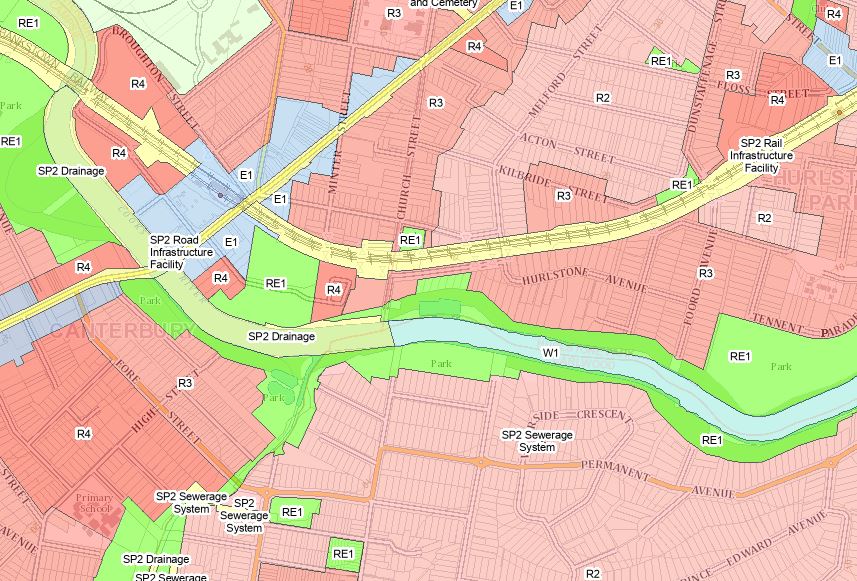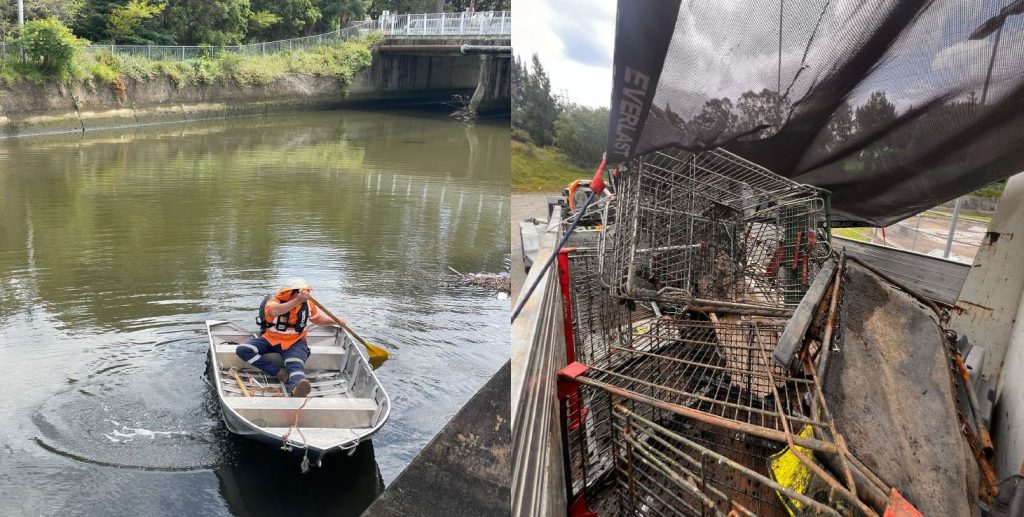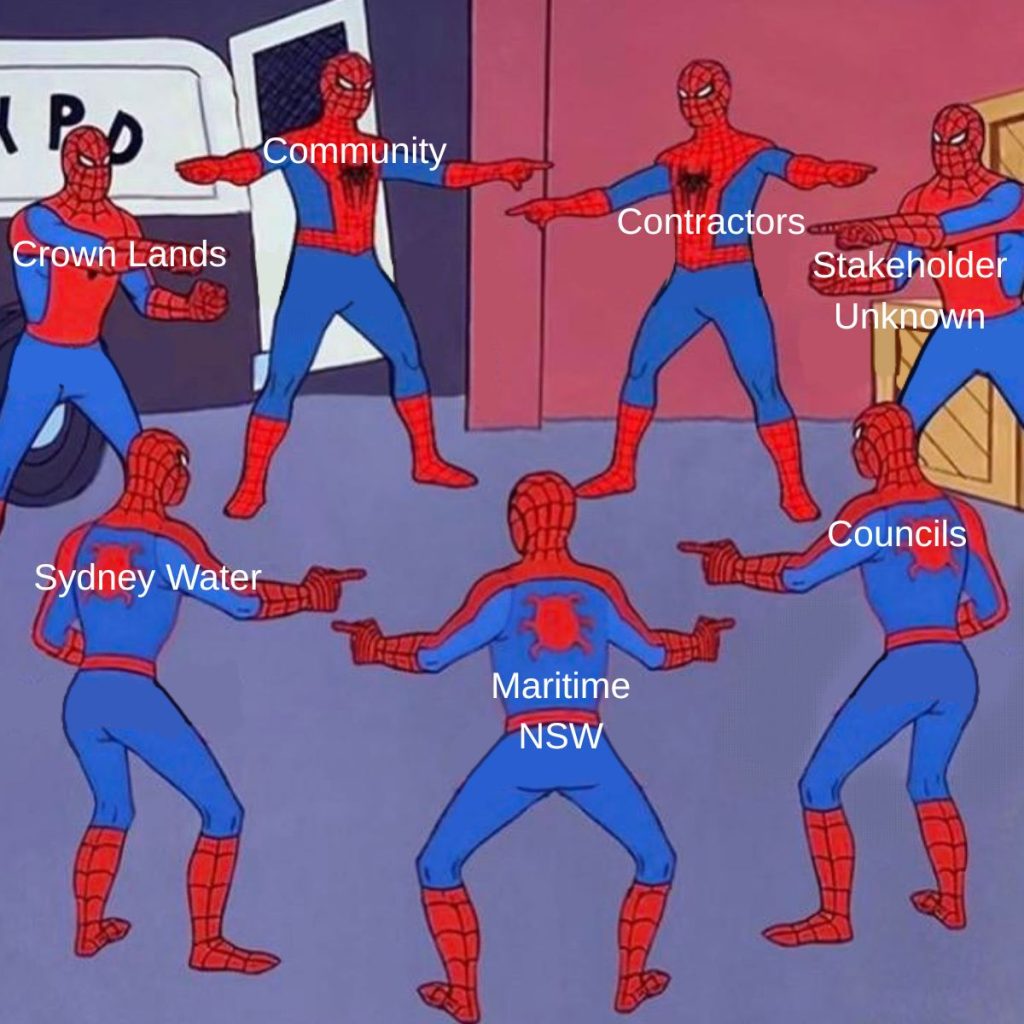It’s time to play everyone’s (least) favourite game – whose job is it anyway? If you haven’t played along before, we focus on a particular river issue to unpack the overly complex nature of decision making in the Cooks River catchment.
One question we often receive from the community is: how hard is it to remove bulky rubbish like trollies and bicycles from the river? The answer… frustratingly hard.
A Line Becomes a River

To borrow from Franciso Cantú’s novel of the same name, the line becomes a river. The image above is from the NSW Planning Portal. The line down the middle of the river, designates the point at which the river abruptly shifts from ‘W1’ waterway, to ‘SP2 Drainage.’ From this point up, the river is legally a drain and therefore belongs to Sydney Water.
Technically, the section of the river zoned as a waterway is under the jurisdiction of either Maritime NSW or Crown Lands. When the Cooks River Alliance (CRA) approached Maritime NSW in 2024 regarding the possibility of them doing regular clean-ups, we were told it may be possible in the future but it doesn’t have currently enough resources to do this. This is a problem, as bulky rubbish continues to accumulate.
For its section of the river, Sydney Water employs a contractor to remove bulky rubbish on a quarterly basis. The design and nature of the river, or ‘stormwater asset’ in the upper section of the catchment, pose multiple challenges to removing rubbish. In order to reach items like trolleys, the contractor is required to row out to the item, attach a winch to the submerged trolleys and other items, while a crew on the ground will pull the trolleys to the bank and load them into a tipper truck. It looks something like this:

Have a look at the contractor’s report from a clean up in late 2024 here.
‘I Thought You Were Doing It’
As any local resident who spends time on the river can tell, the bulky items tend to stay in the river for prolonged periods in between clean-ups. To fill the gap, councils organise additional clean-ups on an as-needed basis to remove items. These are often organised through contractors like Ocean Crusaders, an organisation dedicated to cleaning waterways before rubbish reaches the ocean. These clean-ups come at additional expense to local ratepayers and can only be done when the Brisbane-based team are in Sydney.
Why is it this hard to keep rubbish from the river? There are several reasons but the primary issue is the fragmented nature of waterway governance in NSW. The diagram that most closely represents the nature of governance in the Cooks River Catchment, resembles the well-known Spiderman meme.

The good news is that the NSW Department of Climate Change, Energy, the Environment and Water are currently in the process of reviewing catchment governance across the state. You can read the NSW Water Quality Governance Roadmap here. Stay tuned for more updates on the review’s recommendations soon.
The lack of catchment-wide governance is the principal barrier to restoration of the river and a major focus of our engagement and work. This will require a change in NSW legislation. In the absence of catchment-wide governance, the CRA will continue to work with local councils, land managers, government agencies and business to keep our waterway clean.

